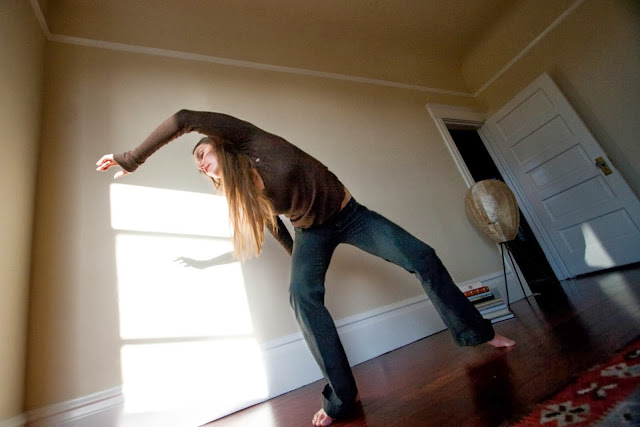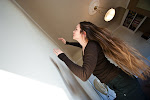I'm thinking of scale right now, and explaining through this concept dance practices that often are talked about in different terms.
A contemporary choreography may break into wild running and climbing all over the performance site.Or a dance performance may include dancers staying seemingly motionless. In Jesse Hewit's Strong behavior (2010) female dancers' minute movements and changes of expression on their presumably blank faces build a breathtaking drama.
It is clear that these two involve focus on different scales. The first on the largest movement possible for humans un-enhanced. The second concentrating on the minutiae. Both reset our perception. The first will hopefully change our awareness of space and place, maybe even make our hearts pump faster. The second operates on personal levels, opening psychological and inter-relational vistas.
In both cases there is a change from the traditional scale of proscenium dance - a change that occurred decades ago when the futurists turned their performance events into general riots, Trisha Brown put dancers on rooftops and the sides of buildings, and performance artists presented bodies in specific places. Later addition: after re-checking Marvin Carlson I need to mention the early 20th century Russian avantgardists here, too.
We were invited to relate to the events and actions on another scale than the defined-limbed-bodies within the square/cubical space of the stage, presented by more traditional western dance forms.
I'm thinking what the possibilities of choosing and using scale are for dance/performing artists. I'm thinking what using scale has meant to the work I have produced in the past, and what I can do with the artists I'm currently rehearsing with creating "Toxic".
Last spring "Life sustenance" was generated and performed in an intimate gallery space. There was minimum technical equipment, and the performers mixed into the crowd of viewers in some instances. There were hints in the show to indicate that the viewers had a double duty as guests. Towards the end they were served soup and bread and drinks. Aside from that the show deliberately mixed represented and real action throughout. The audience was let in something that was between them and us, not a public presentation of dancing skills.
The choice was not made out of theoretical concerns, nor out of taste preferences. The choice was borne from scale. When the distance between people in a space is short it feels artificial to me to hold on to the divide between stage and audience. The play with that distance, and the dichotomy artificial / natural, is often where I focus a lot when composing work. It has a lot to do with the role and place of audience. This game can naturally generate different outcomes.
The scale of focus and detail in a given performance might well be one of the most important traits that direct it's impact: where it is resounding in and after it's showing. What kind of questions it will help surface.
And most importantly, scale has everything to do both with site, and the place audience holds in it.
Wednesday, October 6, 2010
Subscribe to:
Posts (Atom)


